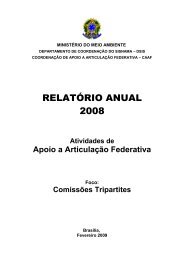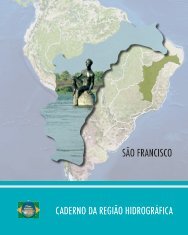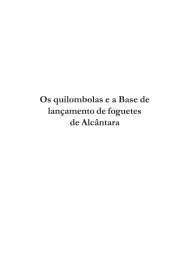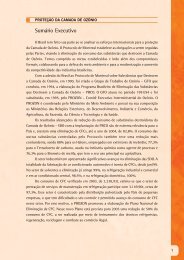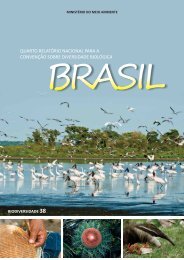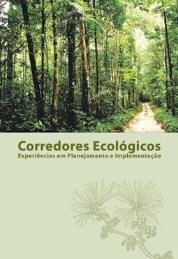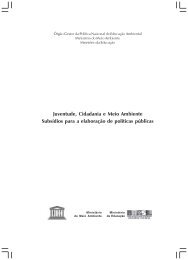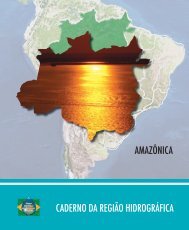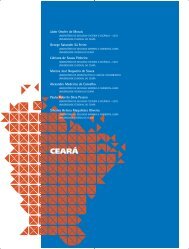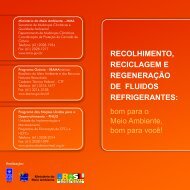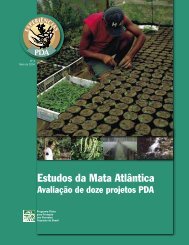Protected Areas
Protected Areas
Protected Areas
- No tags were found...
You also want an ePaper? Increase the reach of your titles
YUMPU automatically turns print PDFs into web optimized ePapers that Google loves.
governmental shperes. The Caatinga isalso indirectly related to the Conventionon Climate Change, since climate changeis increasing the aridity of this region.<strong>Protected</strong> <strong>Areas</strong>Less than 4% of the Caatinga is locatedwithin federal protected areas andless than 1% in strict-protection areas(such as Parks, Biological Reservesand Ecological Stations), which imposegreater restrictions on human activities.Even so, these protected areas faceserious problems of implementation.They need to address a series ofproblems to do with the protection oftheir biodiversity, such as hunting, fires,deforestation and wildlife trafficking.In addition it is worth mentioning thatonly half the federal protected areas inthe Caatinga contain only this biomewithin their limits. A large number ofCaatinga protected areas reveal basicproblems, such as a lack of proper landtitles, an absence of management plansand a lack of personnel. It is essentialthat new protected areas are createdin order increase the proportion of thisbiome under protection and to improvethe management of existing areas. TheCaatinga Biome Coordination Unit inclose association with the Departmentof <strong>Protected</strong> <strong>Areas</strong> is working towardsthe identification and creation ofnew protected areas by updatingthe assessment of priority areas forconservation in the biome and theprocedures for their creation.Sustainable UseThe Caatinga has great potential for thesustainable use of its biodiversity. In fact,a large part of its resident populationhas long been using the biodiversity ofthe Caatinga for its livelihood. We canhighlight a number of species that have(i) timber potential, such as Mimosacaesalpinifolia; (ii) forage potential,such as Caesalpinia ferrea and Zizyphusjoazeiro; and (iii) medicinal potential,such as Muracroduon urundeuva (anastringent), Annona crassiflora (an antidiarrheal),Croton campestris and Crotonsp. (antipyretics). Most of the exploitationof the Caatinga is extractivist withlittle concern paid to its impacts, thusjeopardising the survival of the speciesexploited. However there are enterprisesand communities that sustainablyharvest products such as caroa fibre(Neoglaziovia variegate) for handicraftsor food items such as juices and candiesfrom countless fruit species such as theumbu (Spondias tuberosa).Part of the mandate of the CaatingaWorking Group established by theMinistry of the Environment andcoordinated by the Caatinga BiomeCoordination Unit, is to monitor theexecution and assess the results ofthe “Demonstration of IntegratedManagement of Ecosystems and RiverBasins in the Caatinga Biome” project.The principal objective of this Ministry ofthe Environment project is to encouragethe sustainable use of timber and nontimberproducts, by supporting a seriesof activities to manage the Caatinga formutiple purposes, including the marketingof the sustainable produce of Caatingacommunities.Caatinga Biome Coordination Unit- Objectives and ActivitiesThe Caatinga Biome Coordination Unitis responsible within the Ministry ofthe Environment for defining policiesand strategies for the conservationof this biome. The Unit’s prioritiesinclude disseminating and promotingthe Caatinga within the country,26



